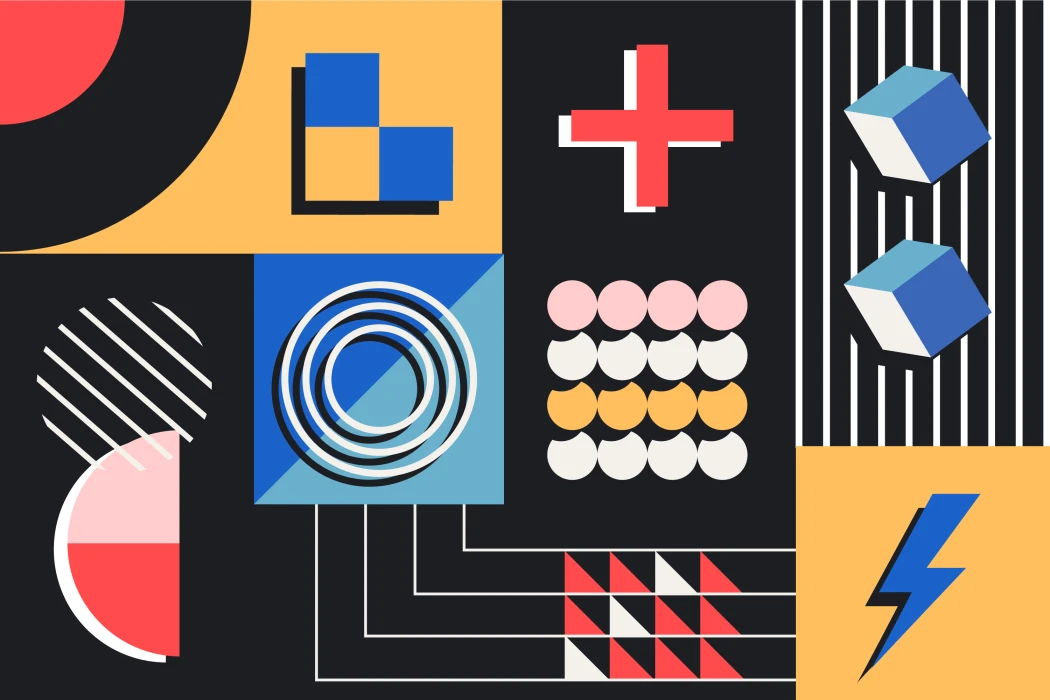Building a design system ensures your brand is consistent, efficient, and scalable. This article provides a comprehensive guide to building a successful design system that will enable you to design for scale and save time in the long run.
What is a design system?
The Design System is a set of patterns and architectures that allow for the streamlining of the product creation and maintenance process, as well as providing a clearer understanding of the design processes and creating a sense of product identity with the customer. This process is valuable for designers and developers since a lack of standardization and organization can lead to duplicated and frustrating work. In addition, the design system improves scalability and consistency across different pages, assisting in creating and implementing work.
It's important to note that the design system isn't just about color palettes and icons but also includes rules and principles that should guide the entire interface development of a company. It covers animations, illustrations, grids, components, best practices, and marketing, among other aspects. The design system contains these visual patterns and codes to ensure quality in the final user experience.
Design system to draw inspiration from
Companies like Adobe, Apple, Microsoft, Buzzfeed, and Stack Overflow use the design system and serve as inspiration in this process.
Spectrum, the design system from Adobe, is one of the most well-known in the industry. It offers components, tools, and principles for product teams to work more efficiently and to make "Adobe's applications more cohesive."
It is divided into three main parts:
Principles: where we can learn about their foundational thinking and how they are put into action in the design system
Resources: where it is possible to download resources like UI kits, fonts, and icons, to help create a design quicker and more accurately.
Implementation: where it is possible to use an open-source components library,
The system includes design guidelines and files, components specifications, and their respective source codes. We can see not only icons, typography, forms, and illustrations but also the consistency in the content, such as UX writing to include more people, the voice and tone focus on being honest, friendly, and responsible.
In the components section, for example, we can see when and how to use them, including their different styles, do's and don'ts, and content standards. keyboard interactions, and behaviors. Designers can download the UI kit, and developers can view the respective components' implantations.
All of these features are focused on maintaining consistency and quality of user experience across Adobe's applications.
How to build a design system?
Before getting started, planning is crucial. Understanding existing products, patterns to be maintained, the company's objectives and mission, and the work of employees and user needs. These are all important subjects to understand how the process will unfold, its stages, priorities, collaborators, and deadlines.
The design creation process should be aligned with different teams, such as stakeholders, marketing, design, and development. Understanding the product's functionalities and ensuring they can implement them is essential. Also, they can provide the necessary feedback to improve the design system, making it an iterative process to improve the product continuously.
Finally, documenting the process in an organized manner and making it available to everyone involved is essential. Clear and complete documentation contains components and codes and explains how, when, and where they should be used. It also makes the entire process easier by reducing time and stress in decision-making steps.
Communication is a vital principle. Design systems are not a one-day build; testing, gathering feedback, understanding, and improving some possible issues is essential. In addition, it requires constant updates to remain effective. This whole process will help to have greater cohesion within the team, especially in the communication between designers and developers. They can learn to "speak the same language" and reduce the gap between prototypes and what is being implemented, ensuring that expectations and needs are achieved.
Conclusion
A design system can be developed in many ways and encompass different contents. However, it becomes essential to ensure consistency and quality of digital products. Although it's a lot of work, it will meet many of the team's needs, bringing greater consistency to the brand and improving the user experience. Furthermore, with the implementation of the design system, creation, and maintenance become more efficient and enjoyable.
Tags
Subscribe to
Our
Newsletter
Join 1,000+ people and recieve our weekly insights.

Success!
Thank your for subscribing to Buzzvel's
Newsletter, you will now
receive
amazing
tips
and insights weekly.




